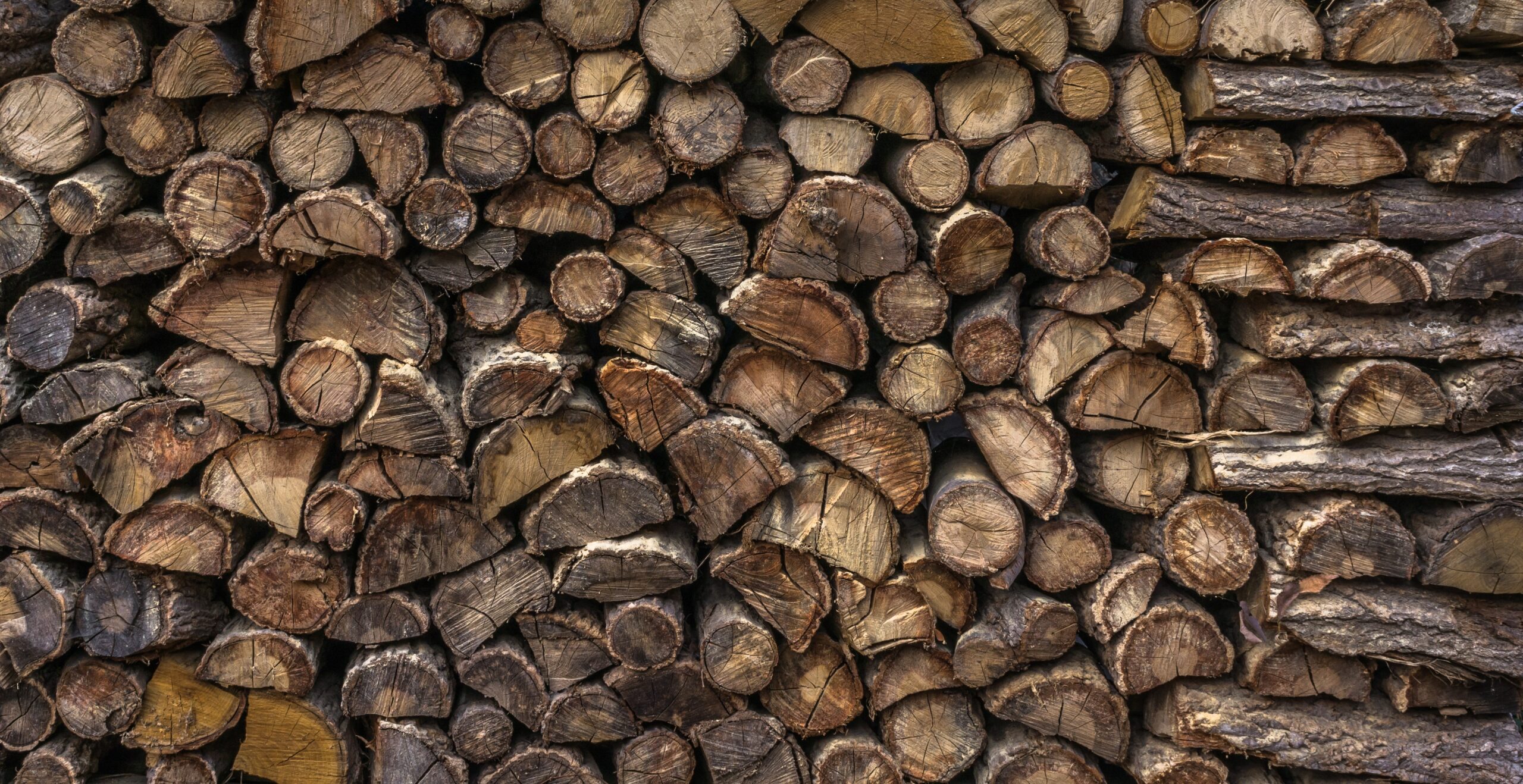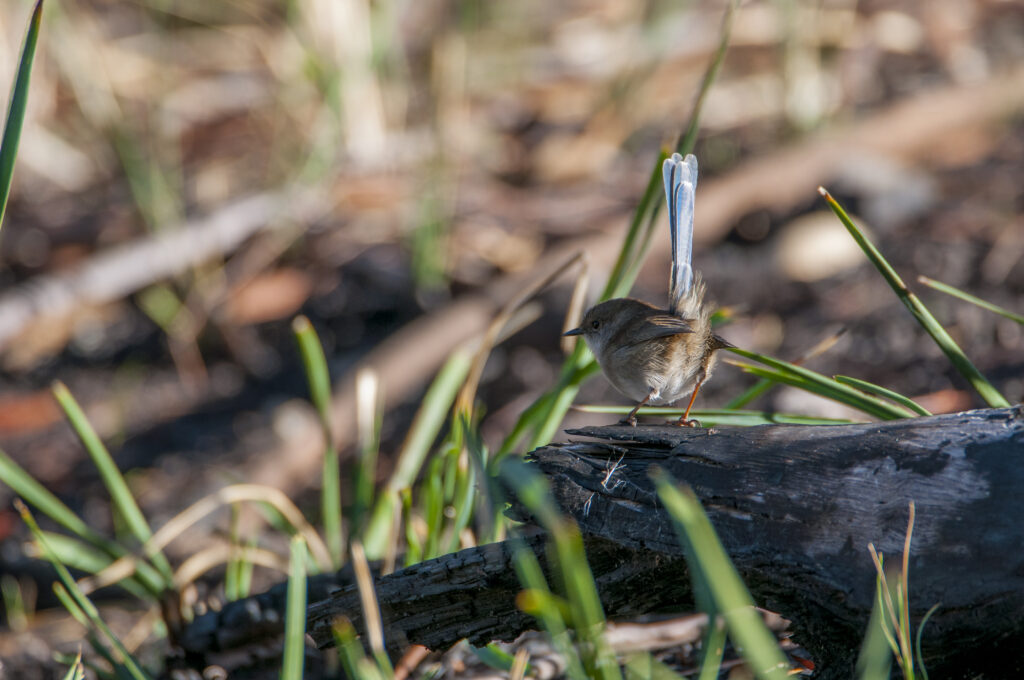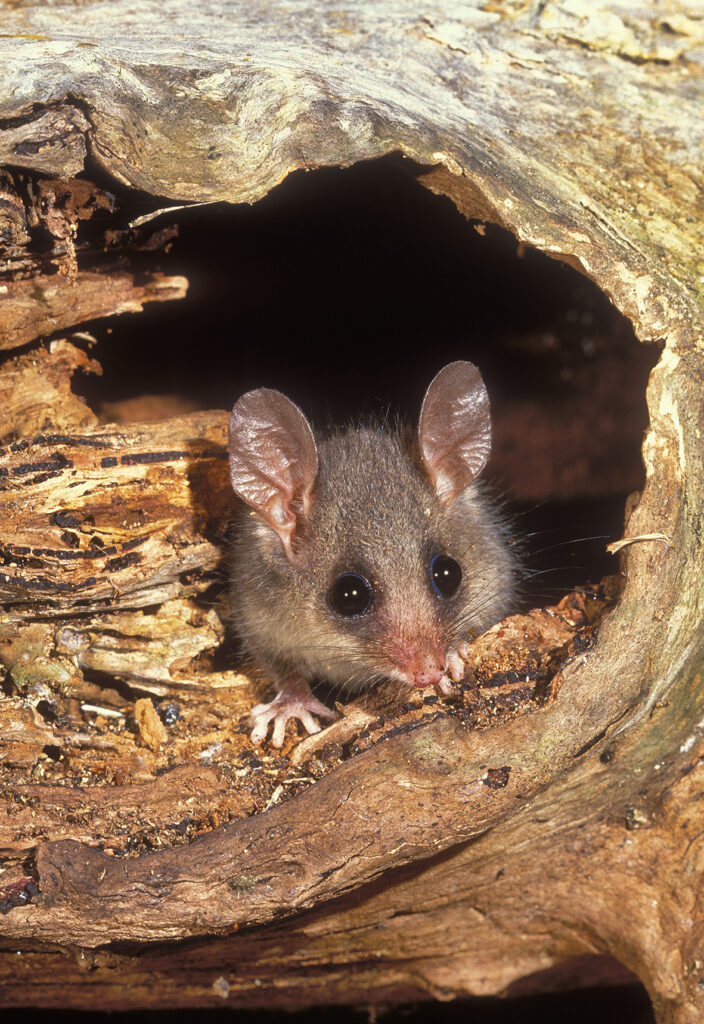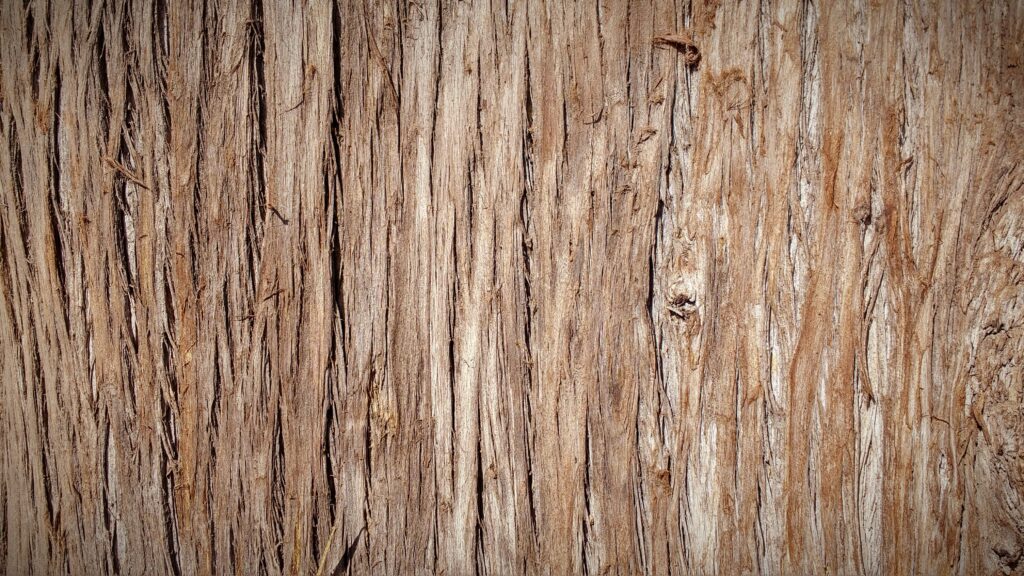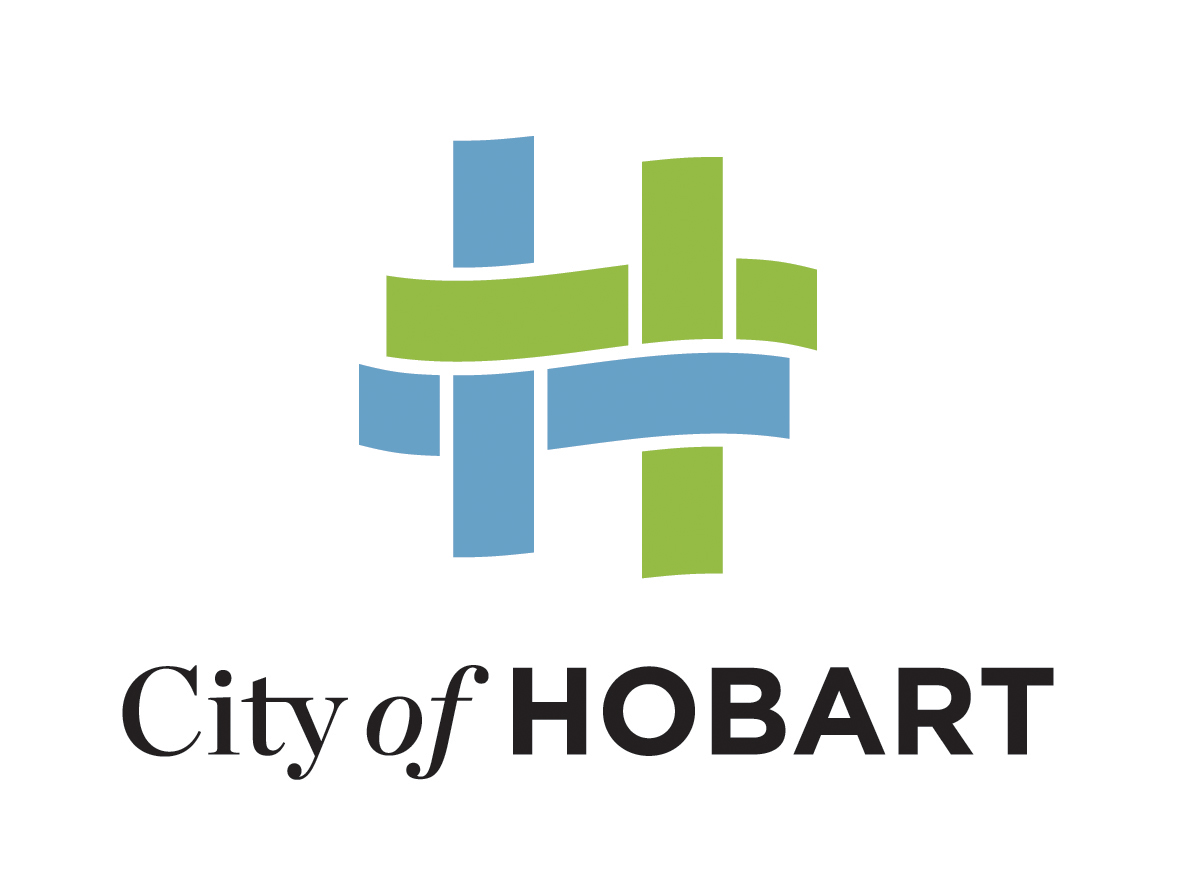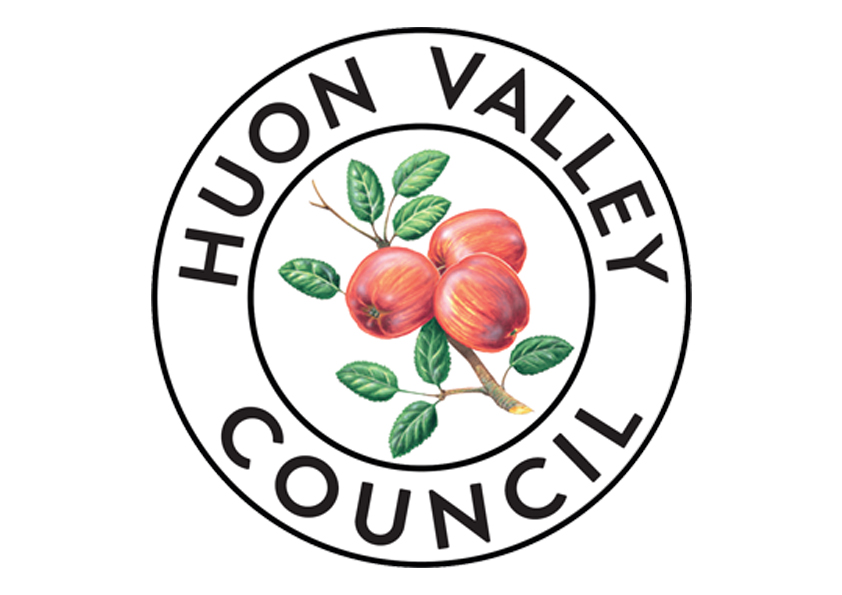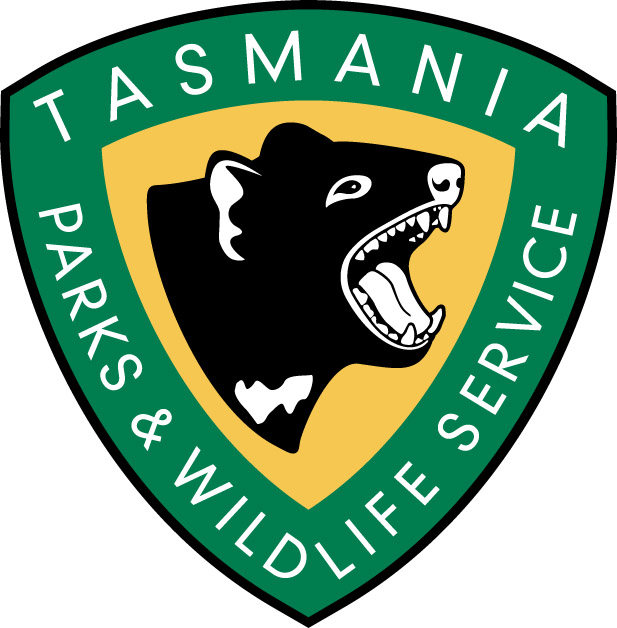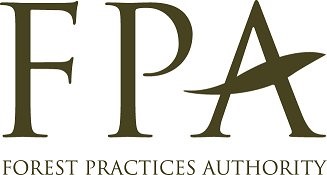Firewood
Firewood is an important regionally accessible form of fuel used for home heating and, sometimes, cooking. In Tasmania the majority of firewood is collected on private property, where logs are taken from the ground or trees (dead or living) are chopped down. People often don’t realise the importance of this dead wood to local wildlife and biodiversity.
Tasmania – Australia’s largest firewood consumer
When it starts getting cold and wet outside many Tasmanians begin lighting their fires. In fact, firewood is the main source of home heating in Tasmania, with 50% of homes using wood as a primary heat source1. Tasmanians are the greatest consumers, per person, of firewood in Australia.
Tasmanian firewood-using households burn 5.8 tonnes/year2. A report released in 2003 estimated that to be approximately 610,000 air dry tonnes of firewood/year1. Of the firewood consuming households it has been estimated that 39% collect their own wood and 61% buy their wood. Most of the purchased wood is from small collectors or suppliers (62.5%), commercial wood yards provide 22.5% of the market and friends and relatives supply the remaining 15%. Of the user collected firewood 82.2% is obtained from private land and 17.8% is collected from public forests (Permanent Timber Production Zone [PTPZ] Land). As public forests on PTPZ Land are generally managed for wood production while the majority of native forests on private land are not, it is likely that the impact on biodiversity values is greater on private land. Of the households that collect their own firewood most collect fallen dead wood (58%) or standing dead wood (33%). The report by Driscoll et al. (2000) detailing these statistics can be read here.
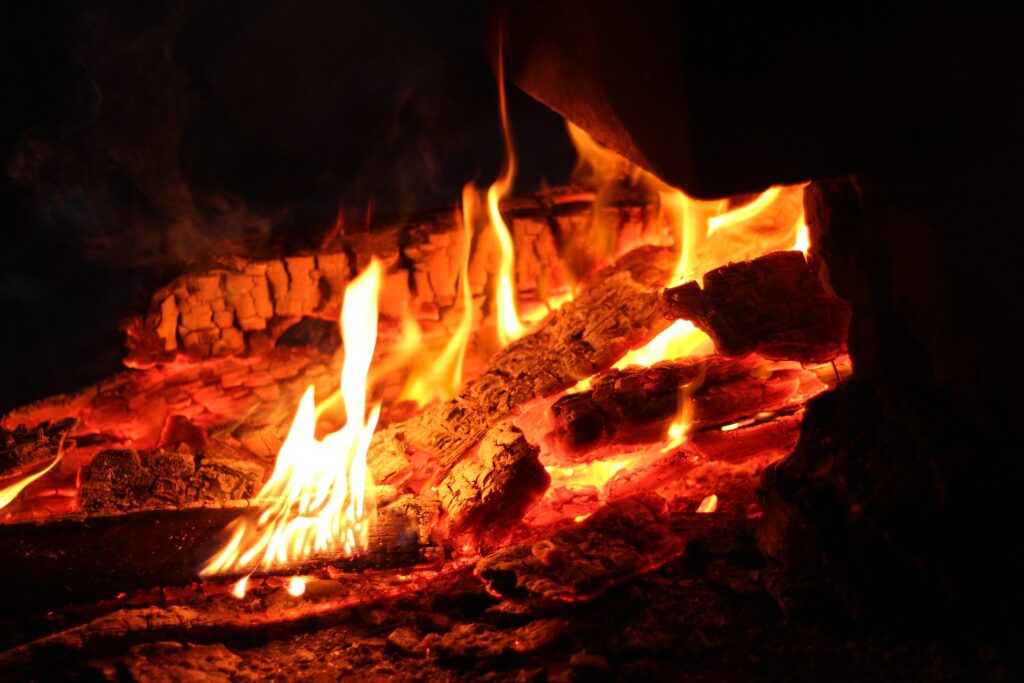
Is it legal to take firewood from public land?
Unless you have permission from the land owner or land manager, it is illegal to take firewood from public land. Under existing legislation a permit is required to take any native plant species from public lands managed by the State Government. This includes National Parks, State Reserves, Game Reserves, Nature Recreation Areas, Conservation Areas, Regional Reserves, Historic Sites and Public Reserves under the Crowns Lands Act 1976, Permanent Timber Production Zone Land under the Forest Management Act 2013 and Future Potential Production Forest Land under the Forestry (Rebuilding the Forest Industry) Act 2014 all other Crown land that does not currently have reserve status under the National Parks and Reserves Management Act 2002. A permit is also required to take any native plant species from Private Sanctuaries and Private Nature Reserves which have been declared under the Nature Conservation Act 2002, if you are not the owner of that land.
Is it legal to take firewood from private land?
In order to take wood from private land you must always have permission from the land owner, who is responsible for all forest operations on their land. According to the Forest Practices Regulations 2007 there are certain situations where there is an exemption from requiring a forest practices plan if standing or fallen timber is to be removed, these include:
- Provided it is not vulnerable land, the area of trees to be removed is less than 1 ha or the volume of timber is less than 100 tonnes, whichever is less, in any 12 month period
- The clearing of trees is to provide a reasonable buffer for existing infrastructure or for public safety
- The land is previously cleared and converted land
- The purpose of the clearing is for dam works, construction of gas pipelines or roads, mining activities, construction of buildings, maintenance or building of railways and electricity infrastructure
Where large volumes of timber are to be removed, a forest practices plan will usually be required. The Forest Practices Authority can tell you if you need a forest practices plan and if so, what is required to get one. Some local councils also require permits prior to removal of trees on private land. You will need to check this with your local council.
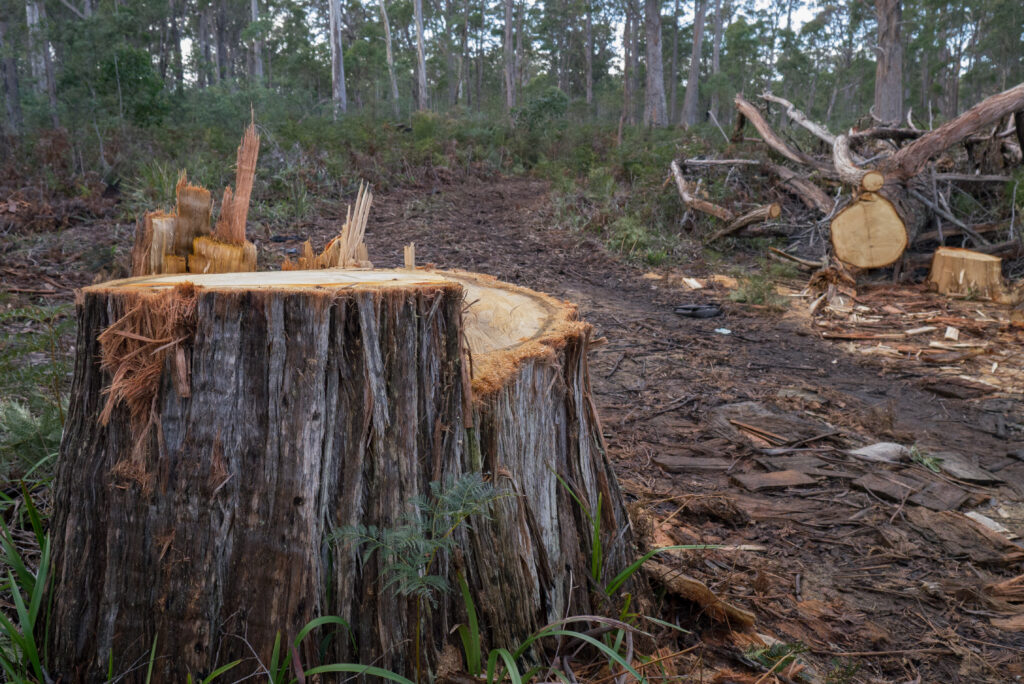
Why is illegal harvesting of firewood, or ‘woodhooking’, a problem?
The illegal collection of firewood, known locally as ‘wood hooking’, has been identified as a significant social and environmental issue. It raises issues relating to:
- Biosecurity – weeds, diseases and pathogens can be spread from one location to another by earth on boots, clothing and vehicles and pose a threat to the health of natural ecosystems. e.g. phytophthora root rot
- Safety – activities carried out in the bush carry an inherent danger, especially when working alone or felling trees. Overloaded vehicles and unsecured loads also pose a risk to people in the vehicle and other people on the road
- Accident liability – property owners have concerns about liability when people are carrying out activities on their property
- Biodiversity loss– Taking dead standing and fallen wood has a direct impact on animals that rely on tree hollows for shelter and breeding
- Other environmental damage such as sedimentation in streams due to poor creek crossings, excessive rutting of roads and tracks, erosion, fuel spills, escaped fires from camp fires
- Additional illegal activities – Illegal harvesting of firewood is often conducted in unison with other illegal activities such as:
- rubbish dumping – loads of rubbish are sometimes taken into the bush and dumped before collecting and reloading the vehicle with firewood from nearby
- theft of other property like fuel, vehicles and chainsaws
- property damage – fences, gates and roads
- tax avoidance – illegally harvested wood is sold informally and the seller does not pay tax on the income received
- money laundering – some illegal firewood operations are associated with more serious criminal activities associated with organised crime such as drug operations
- Air pollution – air pollution is significantly increased when burning poor quality (i.e. green) wood
In Tasmania the firewood industry is an intergenerational ‘backyard’ industry. It is a common conception in the community that firewood is a ‘free resource’ and a person’s ‘right’ to collect. This misconception makes regulating and policing the activity complex and challenging.
Why is dead wood important for animals?
Contrary to the popular belief that dead trees are only good for firewood, the wood, both standing and fallen, provides a home for many native animals and plays an essential role in keeping our beautiful bushland areas healthy. Some of our native animals, including birds, are directly threatened by the removal of dead standing trees as they rely on hollows in trees for shelter and breeding. Hollows are produced by environmental processes that occur over long periods and trees with hollows suitable for wildlife are generally more than 150 years old. Fallen timber from the forest floor is also vital habitat for mammals, reptiles, amphibians and invertebrates and is extremely important for mosses, lichen, fungi, liverworts and micro-organisms (such as bacteria, small fungi, algae) which play an important role in returning nutrients to the soil.
Importance for birds
At least 29 of Tasmania’s bird species rely on hollows in standing dead trees for nesting in Tasmania. Four of the bird species listed under the Tasmanian Threatened Species Protection Act 1995 are known to be hollow-dependant. This includes the critically endangered Orange-bellied Parrot, the endangered Swift Parrot and Forty-spotted Pardalote and the vulnerable Masked Owl. The first three are also listed as endangered or critically endangered under the Commonwealth Environmental Protection and Biodiversity Conservation Act 1999.
Many species of birds also forage on the insects found in dead or decomposing wood.
Importance for mammals
Numerous native and exotic mammals in Tasmania rely on tree hollows. Five arboreal marsupials, including the common brushtail possum, Common ringtail possum and Eastern pygmy possum use tree hollows. Eight bat species, including the endemic Tasmanian long-eared bat use tree hollows. Tasmanian devils and quolls use hollow logs as dens.
How can you help save animals and birds?
There are a number of things you can do to help reduce the impact of firewood harvesting on our precious native wildlife.
If you are collecting your own wood:
- Collect smaller trees and branches instead of fat trees and logs that have hollows or may form hollows if left to decay
- If you have the permission of the land manager/owner and the skills, fell living trees and leave them to season for harvesting in the following year
- Alternatively, if you have the permission of the land manager/owner, you can ring bark smaller trees for harvesting the following year
- Leave hollow logs alone, whether they are standing or lying on the ground
- Ensure that the required permits or approvals are obtained prior to the collection of your firewood
- Collect waste wood from recently harvested forestry coupes with permission of the land manager
If you are buying your wood:
- Purchase wood from Firewood Association of Australia (FAA) accredited sellers or sellers that collect their wood legitimately from forestry operations or other sustainably managed forests and plantations
- Ask if your firewood has been sourced from areas where the removal of native vegetation has been approved and for written evidence of this
- Do not buy wood if the vendor cannot tell you where the wood has come from
- Ensure that your firewood has not been collected from areas listed as critical habitat for endangered species
- When available purchase plantation timber instead of native forest or woodland timber
- Whenever possible purchase recycled wood, such as old fence posts or mill off-cuts
If you witness illegal activities in the bush please report the crime to Bush Watch on 131 444
Sources
- Resource Planning and Development Commission 2003,State of the Environment Tasmania 2003, last modified <14 Dec 2006>, http://www.rpdc.tas.gov.au/soer, accessed <14 May 2017> State of the Environment Tasmania, 2003,
- Driscoll, D., Milkovits, G., and Freudenberger, D. 2000, Impact and Use of Firewood in Australia, http://www.environment.gov.au/resource/impact-and-use-firewood-australia, accessed <23 Feb 2017>, CSIRO Sustainable Ecosystems, Canberra.
This information resource is endorsed by
